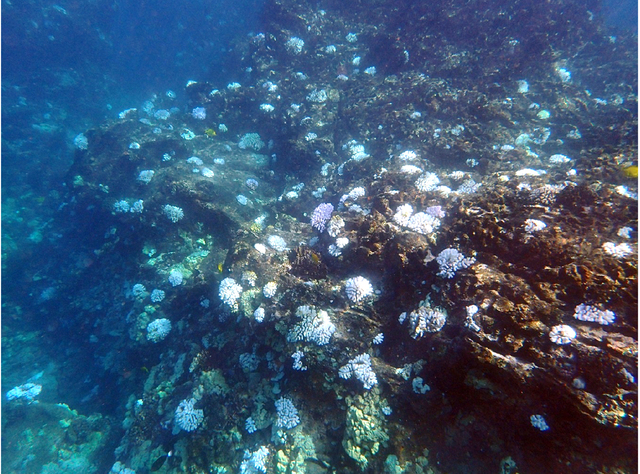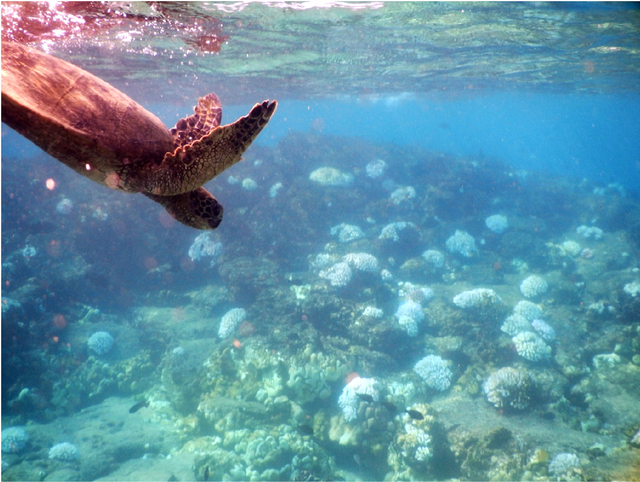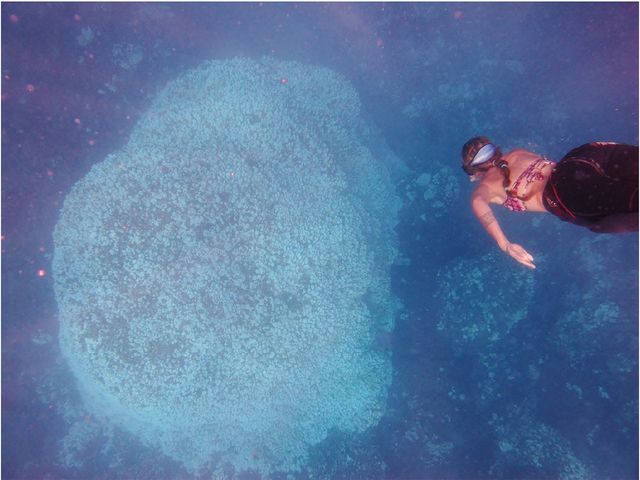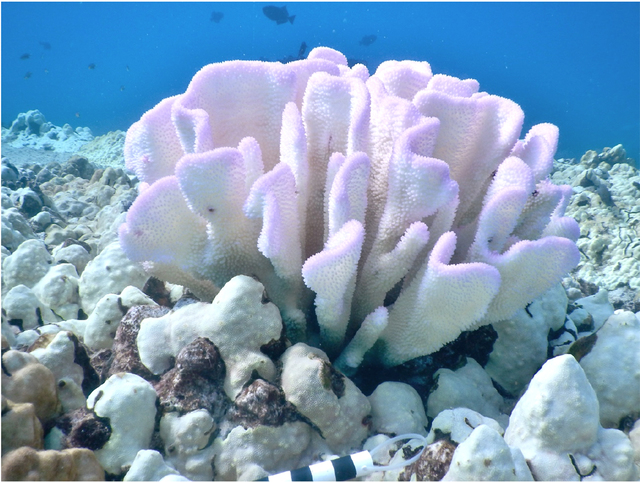KAILUA-KONA — The results of Bleachapalooza, the recent statewide attempt to survey coral bleaching, shows that it’s been more severe on West Hawaii compared to the east side of the state — with some species showing nearly 100 percent bleaching, one of the organizers reported.
“These reports have been crucial to gaining a better understanding of the extent, duration, and future recovery of coral from this unprecedented level of coral bleaching,” said Lindsey Kramer, Hawaii Island coordinator of the volunteer Eyes of the Reef Network
That knowledge comes in part because more reports were submitted on that side of the island by volunteers who went out in the water and documented what they saw.
In all, 32 of the 75 statewide reports were around West Hawaii.
And those reports showed that bleaching was severe and widespread on this side.
At least half of every observed coral had signs of bleaching. For some species, such as smooth lobe and cauliflower, almost the entire population was completely bleached white on most reports, wrote Kramer
The “alarming change in coral color” was visible from the surface and shoreline, Kramer said, with surfers in Pine Trees in Kohanaiki and other areas submitting reports.
Coral bleaching is where a stressed coral turns translucent, appearing almost dead. It makes it more likely that the individual polyps will die, potentially killing a whole colony. That can be devastating for the marine life that feeds off coral, and even for tourism and watergoers who dive and snorkel to catch glimpses of that life in action.
As temperatures drops and the animals recover, it’s still unclear how permanent the damage will be. Bleaching can be caused by numerous stressors, but the most common is high water temperatures.
“It will likely be another month before we know the full effect of coral bleaching on coral survivorship,” Kramer wrote.
Coral surveys with the Kona section of the Department of Aquatic Resources have spotted the partial deaths of colonies, including at Puako and Keauhou.
Maui also saw severe coral bleaching in similar patterns to the Big Island. Oahu and Kauai had severe bleaching on some local reefs, the reports showed.
“Although partial coral colony death was not what we were hoping for, corals may still be able to recover. Because corals are colonial animals, surviving portions of coral colonies can slowly regrow over dead areas. However, coral growth is very slow and full recovery could take many years,” she wrote.
Algae has been seen overgrowing reef corals. It is commonly brown, and has been spotted by workers in Kealakekua Bay. It’s also been seen at Kua Bay, often where the bleaching is the worst.
Reef managers are considering ways to control the growth, Kramer said.
During the event, the EoRN received 75 reports statewide, Kramer said. This was hampered by rough sea conditions and flooding on Maui and eastern shores of the Big Island.
The event also triggered more interest in the reporting system, Kramer said, and they received more than 200 reports for the months of coral bleaching statewide in September and October.
“This event was a huge increase in the amount of usual member reporting, and provided crucial information on coral health and status to reef managers,” Kramer said.
They are currently not planning to do another statewide event, she said, as this was an “emergency response to the unprecedented levels of coral bleaching we are experiencing.”
“The ocean is gradually cooling down, and we are watching for signs of coral recovery in the coming weeks. We encourage Eyes of the Reef members to continue to submit reports over the next few months. We’re also very interested in the status of East Hawaii reefs, as only a few reports were submitted for that side of the island,” Kramer wrote.
She did encourage people to join the group and attend the training held in early spring 2016.










